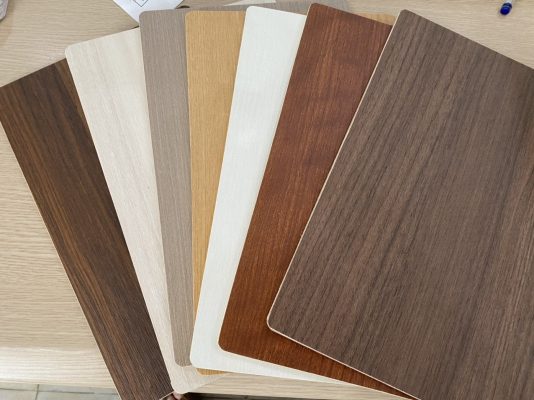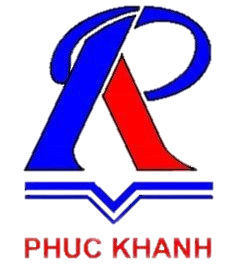Top 3 most popular water-resistant plywood

Key Features of Water-resistant Plywood Water-resistant plywood is constructed from multiple thin wood layers stacked and bonded together with specialized glue. This glue enhances moisture resistance, water resistance, and termite resistance. BWP plywood frequently appears in interior and exterior applications, construction, etc., due to its many outstanding features.
- Water-resistant surface: The surface of the plywood is usually coated with melamine, laminate, or film using water-resistant glue, creating an excellent protective layer. This coating is not only diverse in patterns, meeting waterproofing requirements, but also remarkably scratch-resistant.
- Boiling resistance: Depending on the type of glue used, the water resistance of the plywood can vary. High-quality water-resistant plywood can withstand boiling for up to 72 hours without delaminating.
- Flat, easy-to-clean surface: The surface is coated with specialized glue and goes through a meticulous multi-step production process, resulting in a smooth, dirt-resistant BWP plywood surface. This makes cleaning and maintaining water-resistant plywood furniture easier.
- High density, good screw retention: Made from natural veneer sheets, plywood is easier to work with and secure with screws, minimizing the creation of wood chips and dust compared to other types of industrial wood.
Top 3 Popular Types of Water-resistant Plywood Based on the glue and wood core, water-resistant plywood is categorized into different types to help users choose the right product for their needs. Here are some details about the top 3 popular BWP plywood types that have gained the trust of many customers.
-
Melamine Plywood with MUF Glue Melamine plywood has a high aesthetic surface, and the core plywood is dried to reduce moisture and weight, making it easy to transport during construction and use. MUF glue has good water resistance, suitable for both interior and exterior applications. This advantage is due to the melamine added between the reaction of urea and formaldehyde, with the percentage of melamine in the glue increasing the water resistance of melamine plywood.
-
Film-coated Plywood with PF Glue Using unblended PF glue, which can withstand boiling for a very long time (>72h), film-coated plywood is commonly known as formwork used in construction. With its excellent water resistance and scratch reduction properties, film-coated plywood is also frequently used in exterior applications, maritime purposes, container flooring, etc. However, PF glue contains higher levels of formaldehyde compared to other glues, so customers should consider this when choosing.
-
Wood-Plastic Composite (WPC) Plywood Unlike melamine or film-coated plywood, which consists only of natural veneer and glue, wood-plastic composite plywood is made from wood powder, plastic, and some other additives. Also known as WPC (wood plastic composite), this plywood is notable for its water resistance, termite resistance, mold resistance, and low flammability. It is rated as the best water-resistant plywood, though it usually costs more than other types of wood plywood.
Outstanding Applications Thanks to its stable water resistance, minimal warping, and easy-to-clean surface, water-resistant plywood has become very familiar to users in many fields.
-
Interior Production Melamine plywood impresses with its diverse designs, used for kitchen cabinets, bathroom cabinets, tables, chairs, etc., and is no longer unfamiliar to users. Customers can now find this type of plywood anywhere in interior spaces.
-
Exterior Production Water-resistant plywood has relatively long durability in moist environments, not only used in interior areas such as bathrooms, kitchens, toilets, etc., but also in exterior projects. Some prominent exterior products made from water-resistant plywood include fences, outdoor wall cladding, roofing, tables, chairs, swings, etc.
-
Formwork in Construction In the construction sector, film-coated plywood is chosen for making concrete formwork. Thanks to the smooth film surface, it is easy to clean after dismantling, and the plywood can be reused many times.
-
Outdoor Flooring Another prominent application of water-resistant plywood, usually WPC plywood, is outdoor flooring, such as pool decking, park flooring, rooftops, or decorative pathways in gardens.
How to Test the Water Resistance of Plywood Each type of water-resistant plywood has specific regulations regarding its composition, determining its resistance. In practice, there are many methods, from simple manual tests to complex machinery, to check the water resistance of industrial wood.
-
Delamination Test after Soaking This simple method involves soaking the plywood in water for many days (usually 24 to 72 continuous hours). After this period, the plywood is checked for damage or delamination, and its thickness is measured to compare the swelling rate when the core plywood absorbs water.
-
Boiling Resistance Each type of glue used to bond the plywood has different durability. To compare the differences, a boiling test is conducted on three plywood samples using UF, MUF, and PF glue. The results show that UF glue can withstand boiling at 100°C down to 70°C for 8 to 10 hours without delaminating. Meanwhile, MUF glue can last for 70 to 72 hours, and PF glue can withstand over 72 hours without delaminating.
-
Recovery After Water Absorption Since wood naturally absorbs moisture, plywood will swell when exposed to water. The recovery capability after water absorption depends on various factors: wood type, material structure, plywood density, hot-pressing conditions, etc. Plywood is currently rated as having the best recovery capability. Measurements of thickness differences after soaking plywood for several days are quite low, so customers can fully trust the quality of the material.
